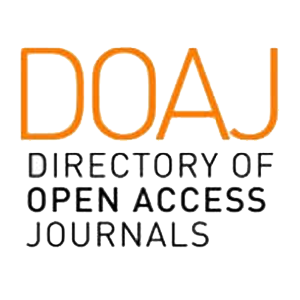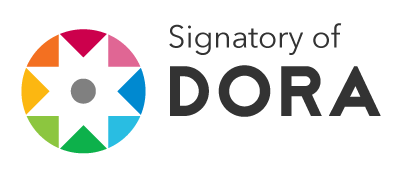Desarrollo Digital en México
Abstract
Dramatic development of information technologies (IT) has been unbalance around de world. The diffusion of these tools has been different between developed and developing countries causing a digital divide. International organisations such as United Nations, International Telecommunications Union and Organisation for Economic Cooperation and Development, have conducted diverse studies related to this area and published proposals for countries in order to increase IT diffusion.
The aim of this document is to present a two level study of the technological development in Mexico in the last twelve years; at the first level to compare results with other countries, and at the second level considering the national perspective. We analysed universal indicators used to measure IT including number of computers, mobile telephone subscriptions and internet diffusion. Mexico digital development has been positive in the last decade, however there are regions that still present an important delay in their IT level of diffusion.
Downloads
References
CANIETI. (2004). Instrumentación del Programa de Competitividad de la Industria Electrónica. Análisis del Sector y Áreas de Oportunidad. México.
CANIETI. (2004a). Instrumentación del Programa de Competitividad de la Industria Electrónica. Estrategia y Plan de Acción. México.
Castells, M. (1999). La Era de la Información. Economía, Sociedad y Cultura. México: Siglo XXI Editores.
Castells, M. (2001). La Galaxia Internet. Reflexiones sobre Internet, empresa y sociedad. Madrid: Plaza & Janes.
Chen, W. y Wellman, B. (2004). “The global digital divide within and between countries”. It&society, vol. 1, núm. 7, summer, pp. 18-25.
Chinn, M. D. y Fairlie, R. W. (2007). “The determinants of the global digital divide: a cross-country analysis of computer and Internet penetration”. Oxford Economic Papers, vol. 59, pp. 16-44.
Cruz-Jesus, F., Oliveira, T. y Bacao F. (2018). “The Global Digital Di¬vide: Evidence and Drivers”. Journal of Global Information Management, vol. 26, núm. 2, April-June, pp. 1-26.
Cruz-Jesús, F., Oliveira, T. y Bacao F. (2012). “Digital divide across the European Union”. Information & Management, núm. 49, pp. 278- 291.
Dewett, T. y Jones, G. R. (2001). “The role of information technology in the organization: a review, model, and assessment”. Journal of Management, vol. 27, núm. 3, pp. 313-346.
Doong, S. H. y Ho, S-C. (2012). “The impact of ICT development on the global digital divide”. Electronic Commerce Research and Applications, vol. 11, pp. 512-583.
IFT. (2018). Adopción de las TIC y usos de Internet en México. Impacto de las características sociodemográficas de los usuarios. Ciudad de México: Instituto Federal de Telecomunicaciones.
INEGI. (2017). Recuperado de: www.beta.inegi.org.mx.
ITU. (2012). Measuring the Information Society 2012. Geneva: International Telecommunication Union.
______. (2013). ITU World Telecommunication/ICT indicators database. Recuperado de: http://www.itu.int/en/ITU-D/Statistics/Pages/stat/ default.aspx.
______. (2017). Measuring the Information Society Report 2017 Volume 1. Recuperado de: www.itu.int.
López, M. H., González-Barrera, A. y Patten, E. (2012). Closing the Digital Divide: Latinos and Technology Adoption. Washington, D.C.: Pew Hispanic Center.
OCDE. (2001). Understanding the Digital Divide. París: Organization for Economic Cooperation and Development Publications.
______. (2006). Working Party on the Information Economy. ICT Diffusion to Business: Peer Review Country Report México. Paris: Orga¬nization for Economic Cooperation and Development.
______. (2010). OECD Information Technology Outlook 2010. Recupe¬rado de: http://www.oecd.org/internet/ieconomy/information-tech¬nology-outlook-19991444.htm.
______. (2015). OECD Digital Economy Outlook 2015. En OECD Publishing. Doi: http://dx.doi.org/10.1787/9789264232440-en.
______. (2016). Stimulating Digital Innovation for Growth and Inclusiveness. The role of policies for the successful diffusion of ICT. 2016 Ministerial Meeting on the digital Economy. París: Organization for Economic Cooperation and Development.
______. (2017). “Estudio de la OCDE sobre telecomunicaciones y radiodifusión en México 2017”. Organización para la Cooperación y el Desarrollo Económicos. Doi: http://dx.doi.or¬g/10.1787/9789264280656-es.
______. (2017a). Access to computers from home (indicator). Doi: 10.1787/a70b8a9f-en.43 44
______. (2017b). Internet access (indicator). Doi: 10.1787/69c2b997- en.
Palacios, J., Flores-Roux, E. y García Zaballos, A. (2013). Diagnóstico del sector TIC en México Conectividad e inclusión social para la mejora de la productividad y el crecimiento económico. Banco Interamericano de Desarrollo.
Palvia, P. C. y Palvia, S. C. (2003). “Information Systems Plans in Context: A Global Perspective. Understanding the global information technology environment: representative world issues”. Strategic Information Management. Challenges and strategies in managing information systems. Burlington: lsevier Butterworth-Heinemann, pp.151-180.
Pick. J. B. y Azari, R. (2008) “Global digital divide: Influence of socioeconomic, governmental, and accessibility factors on information technology”. Information Technology for Development, vol. 14, núm. 2, pp. 91-115.
Pick, J. B. y Sarkar, A. (2015). The Global Digital Divides Explaining Change. New York: Springer.
PR. (2007). Plan Nacional de Desarrollo 2007-2012. México: Presidencia de la República.
______. (2013). Estrategia Digital Nacional. México: Gobierno de la República.
SE. (2001). Plan Nacional de Desarrollo 2001-2006. México: Secreta¬ría de Economía.
Sebastián, M. C. y Ayuso García, M. D. (2011). “Situación de la brecha digital de género y medidas de inclusión en España”. Bibliotecologica, vol. 25, núm. 55, septiembre/diciembre, pp. 227-252.
Shin, E., Kraemer, Kenneth L. y Dedrick, J. (2008). “IT Diffusion in Developing Countries”. Communications of the ACM, vol. 51, núm. 2, pp. 43-48.
SIEMT. (2014). Suscripción a teléfonos celulares móviles. Recuperado de: www.siemt.cft.gob.mx.
Torres García, A. J., y Ochoa Adame, G. L. (2018). “Desigualdad sala¬rial asociada al uso de las TIC en México: un análisis por ocupaciones”. Cuadernos de Economía, vol. 37, núm. 74, pp. 353-390.
Toudert, D. E. (2015). “Brecha digital y perfiles de uso de las tic en México: Un estudio exploratorio con microdatos”. Culturales, Época II – III, 1/enero-junio, pp. 167-200.
Toudert, D. (2013). “La brecha digital en los contextos de marginación socioterritorial en localidades mexicanas: exploración y discusión”. Comunicación y Sociedad, vol. 19, enero-junio, pp. 153-180.
UNCTAD. (2006). Information Economy Report 2006. The Development Perspective. Geneve: UNCTAD-United Nations.
______. (2007). Information Economy Report 2006. Science and technology for development: the new paradigm of ICT. Geneve: UNCTAD-United Nations.
______. (2009). Information Economy Report 2009. Trends and Outlook in Turbulent Times. New York-Geneva: UNCTAD-United Nations.
______. (2012). Information Economy Report 2012. The Software Industry and Developing Countries. Geneve: United Nations Publication.
______. (2017). Informe Sobre la Economía de la Información 2015. Recuperado de: www.unctad.org. 45














